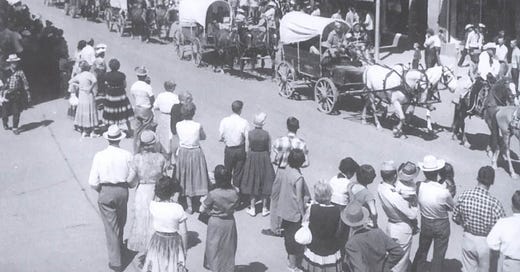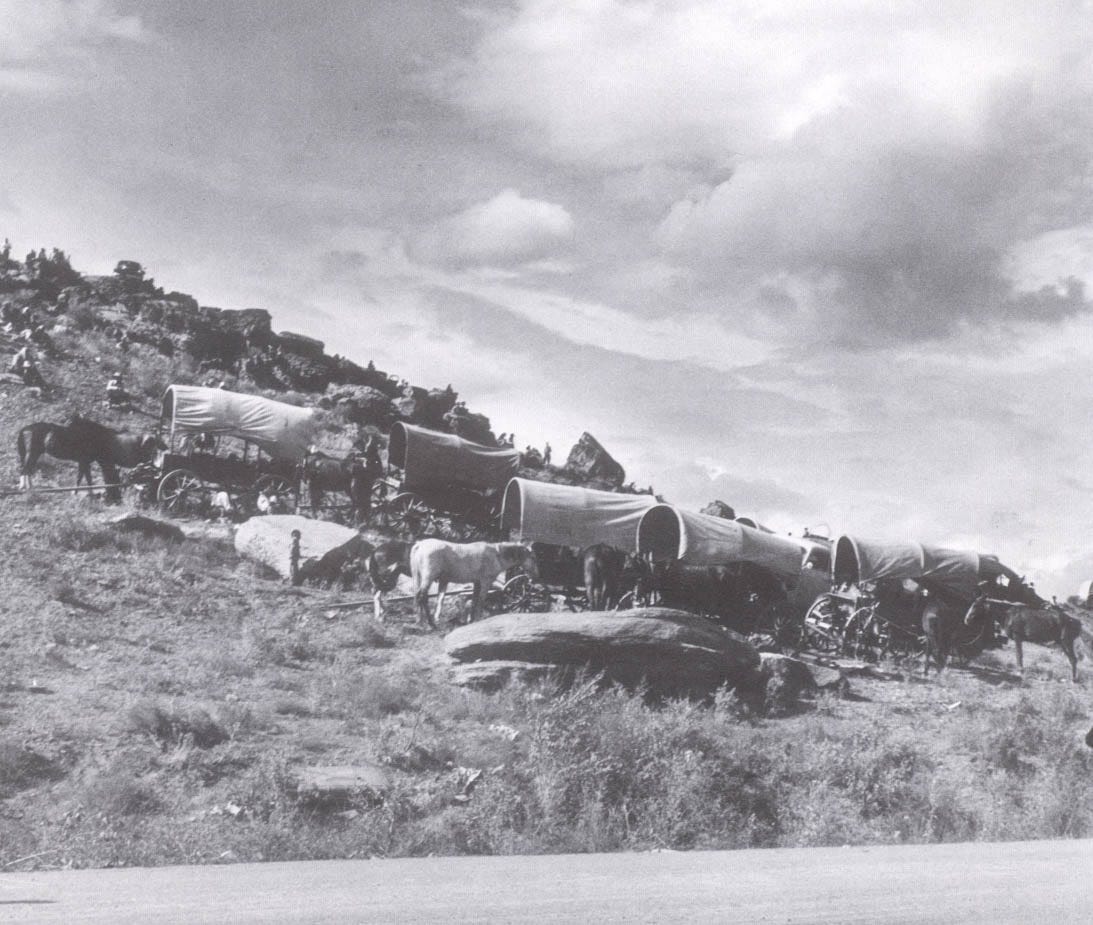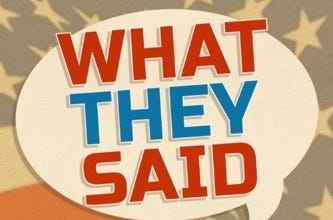I frequently mention Gallup, New Mexico in my posts. This is a background story on this unique town where I grew up. What makes it most special to me is the people and the many events that took place during my life.
Gallup in a small town of 20,000 in northwest New Mexico. It came to being because of the Atlantic and Pacific Railroad in 1881 and named for the railroad paymaster, David Gallup. People that worked for the railroad had to “Go to Gallup” for their paychecks.
Gallup has always been known as the Indian capital because, not only the number of Indian people in the area, the Indian people have always preferred to do business in Gallup, Gallup businesses have always recognized and appreciated the business that they bring to town. The The Zuni reservation is 38 miles south of Gallup and the vast Navajo reservation begins 8 miles from Gallup.
From 1900 to 1950 the number of Navajo trading posts expanded from 20 to 250 and from the outset Gallup was the primary supply center for traders. Until trucks came after WWII, the area at Gallup Mercantile (Merc) was an encampment for wagons and teams from throughout the reservation. For years, my grandparents relied upon freight wagons to haul trade goods from their trading posts and return from the Merc with their store inventory. Wagons couldn’t travel from October until May because of mud and snow, From our trading post operation in Gallup, Dad and I were the only two people that ever traded with all 250+ trading posts on the Navajo reservation. I am the sole survivor of that legacy.
The Merc was also a Budweiser beer distributor and each year the Clydesdale horses would parade through Gallup.
Being on the AT&SF railroad, we also had an annual Ringling Bros. Circus train park at a siding so that he community could watch the unloading and parade of colorful animal wagons.
In the early 30s, the government slaughtered several million sheep on the reservation. In return the government promised the Navajos that they would have schools, roads, and jobs. Nothing materialized until the 50s. A prominent project was a dormitory for Navajo school children in Gallup. Built in 1950, it was home for 300 Navajo students, initially boys, who began attending school for the first time. When I was in the third grade, Navajo boys from 14 to 16 years were placed in first grade. They spoke no English. In time, they melded into the Gallup population and “dorm kids”, both boys and girls, became a normality. By the 70s, the Navajos finally began to get their own reservation schools.
Paved roads on the Navajo reservation were finally provided beginning in the 60s for more convenient access. That too had been a provision of the 1934 Livestock Reduction Act.
The largest ethnic segments in Gallup beginning in the 30s were the European coal miners from Italy and Yugoslavia and Mexican families. Many Italians evolved into retail businesses and the Slavs into services such as mechanics and saloons. Many Mexicans were in the restaurant business and soon a restaurant could not survive in Gallup without good chili.
Sheila’s father was a Greek immigrant during the Depression. He came to New Mexico to mine coal and took a second job washing dishes in a Santa Fe restaurant while learning Spanish and English. He came to Gallup and opened what would become the community’s finest restaurant.
The economy was supported by the large numbers of American Indians and Navajo traders who came to Gallup to sell their crafts and shop beginning in the 1920s. It was not unusual for 50,000 people to come to town on weekends. By 1970, Gallup became entrenched as the primary wholesale source for American Indian crafts and several months was the highest source of sales tax for the State of New Mexico despite being ranked 13th in population.
The Gallup Intertribal Indian Ceremonial was created by Gallup businessmen in 1922 to show appreciation for reservation business. It grew to a major international event and the most prestigious event for American Indian arts and crafts.
Navajo families in Gallup for Ceremonial in the 50s
Navajo encampment at Ceremonial in the 50s
For four years Gallup hosted the National High School Rodeo Finals which attracted several thousand athletes and their families. It was a great community event. Beginning with the first year in Gallup, All Seasons Sports had a sales booth at the rodeo grounds. Contestants were not allowed to wear T-shirts. Sheila set up a screen print machine and sold hundreds of ¾ sleeve baseball shirts with custom and creative lettering. She had to air freight shirt orders to meet the demand. It was a boost to our first-year business.
The annual basketball tournament for women’s national champion was hosted by Gallup during the 70s and early 80s, The Association for Intercollegiate Athletics for Women (AIAW) preceded the NCAA National tournament which began in 1982. The AIAW tournament was a popular event for Gallup. Businesses would sponsor teams and families would host players in their homes. The top sixteen national teams came to compete for the national championship.
At the outset of WWII, the federal government rounded up Japanese Americans for mandatory internment camps. Gallup had Japanese families, but the community rose up to resist the federal relocation mandate and protect its Japanese residents by refusing to allow relocation of them. The government was particularly concerned because there was a large Army ammunition depot in our area. The government relented. There was personal fortune for me in that action because one of my best friends was Eddie Shibata, who later went to MIT and with another classmate, John Freeman. Later, furing the Korean Conflict a Gallup resident, Hiroshi Myamura, became a Congressional Medal of Honor recipient.
The city maintains an honor plaza outside of the courthouse honoring the Navajo Code Talkers from WWII. At the outset of WWII, Navajo men came to volunteer for service, Many brought their own rifles and blankets. The warriors are held in high esteem throughout Navajo county.
Ethnicities were accepted but not disparaged. Among themselves however, there was some ethnic “competition”. My favorite was the competition between an Italian gas station owner and a French grocery store owner who were next door to one another. There was constant haranguing and shouting between them. They carried on like murder was imminent. I delivered Coca-Cola to both of them. I would stop first at the grocery store and then the gas station. The gas station owner, Joe Guadagnoli, would say to me, “How many cases that Frenchman somovabitch take?” If I said ten, Joe would say, “I’ll take fifteen”., whether or not he needed them. Joe always had too much soda pop inventory, but he wouldn’t let Frenchy have the upper hand.
Growing up in Gallup, everyone knew of each other by social or economic association. As a boy, when I needed shoes, Levis, etc., I walked downtown (10 blocks) to M’Lockers Store and told Johnny Mattee what I needed (with parental consent). He would fit me and send me home with a bill. I would make another trip with a check.
Gallup did not have a major store chain until 1960 when Albertsons and Thrifty Drug came to town. Safeway tried in the late 40s but never had community support and left after two years. The town was committed to local businesses. Since 1980 the national chains have invaded. There are now three MacDonalds, two Burger Kings, two Pizza Huts, Three Lota Burgers, two Wendy’s – the list goes on as the community of 20,000 continues to be a business magnet because of the strong reservation consumers.
As I grew through the boyhood ranks of paper boy to grocery sacker to Coca Cola driver, I had occasion to deal with most everyone in the community. There was no prejudice that I ever knew about.
My family had strong ties to the Italian community. Dad was an original partner in the first supermarkets in Gallup with Basilio DiGregorio and Dan DiPomazio. For years I did not know about their partnership. Basilio gave me my first job after my paper route. I was paid 25 cents an hour and thought that I would not only have enough money for college but retire shortly after. Basilio also owned a bank. Later, I wanted to build an athletic club. Because of the larger amount of financing I thought that we needed a bank in Albuquerque or Denver but they insisted upon compensating balances with loans in excess of what we needed, I went to Basilio’s office at the market and arranged a substantial loan. For years when I was younger, my family often went to visit his family on Sunday, and it seemed that we would eat for hours.
Another Italian businessman was Fred Cavvigia. He owned the Pepsi Cola plant and was the primary financier for Navajo traders. He was the first soda pop bottler to offer flavored soda. Strawberry became an instant favorite among the Navajos who referred to it as “ret petsi”.
My grandfather, Donat Francis Monaco, was from an Italian immigrant family and a prominent doctor in Gallup. He seemingly delivered every baby in Gallup for years and if someone was ill, he went to their homes to check on them. He was 5’4” and there were stools throughout the hospital to accommodate him. He graduated from University of Chicago Medical School at the age of 20 and couldn’t be licensed until he was 21 so he went to war. Unfortunately, gassing from WWI led to his early death.
Two of my oldest friends were Dan DiGregorio and Harv Poe, both Italians. Dan went to college on a football scholarship, Harv and I went to the University of Arizona. Harv’s name was Harold, but Eddie Shibata decided to name him after Harvey Rabbit on the Howdy Dowdy show. From that time on, Harv’s mom would harangue us. She lamented that after months of pregnancy, she conscientiously chose his name, only to have his idiot friends decide otherwise. Another classmate, Bill Ratcliff, went to the Naval Academy. Gallup had a good school system that would later come tarnished with government involvement that became conditioned to move at the pace of the slowest learner.
John Chioda was a favorite person in my life. We met when I was fourteen years old. He came to Gallup from Italy with his family and went to work at the Coca-Cola plant where I was a bottle sorter. Despite his lack of English, but his great character and laughter, we became instant friends. We usually worked from 4am to 5pm and took lunch together about 10am. I usually brought salami and cheese, and he brought fresh Italian bread. We would tear off bread, make gestures, laugh, and grunt like animals. He was one of the hardest working men I ever knew. Later he went to work in the produce department of Basilio’s market. One of his kids, Sammy, became, and has remained, a prominent newscaster, radio host, and businessman for nearly fifty years.
There was never much transiency in Gallup. It was a solid citizenry. As kids we often complained that our parents seemed to have antennas that reached out because they always knew where we were and what we were doing. We could expect discipline from our friends’ parents as well as our own.
There were two people in Gallup that were considered rich, a car dealer and a funeral director. Everyone was friends and if there were poorer people, no one knew the difference or paid attention because we were all friends.
I went to school and played ball with everyone. In the 50s, our football team received special recognition because there were no two identical ethnicities in our starting lineup. Everyone was different, but we didn’t realize it and our parents didn't mention it. One of the most prominent men in our community, a Black American, had a shoeshine parlor and provided baggage service for train passengers.
Everyone respected family values and work ethic.
I never knew that there were Jews in Gallup until I went to college. I had an unusual encounter and called home to see if there were any Jews in Gallup. When my parents told me about the Jewish families, “How come I didn’t know?” I asked. They responded, “Would it have mattered if you did?”
Among other things I learned from Dad was a sense of community participation. He had foresight and good sense. In the 50s, he served on the first Zoning and Planning Commission in Gallup that began to consider water supply options for the city. He attended and participated in projects to bring water to Gallup beginning in the 50s. By 1960 the project became viable, but water won’t flow to Gallup and the surrounding Navajo Chapters (states) until 2028 – 78 years in the process. He traveled at personal expense to places like Disney and Six Flags over Texas to learn about making the Ceremonial a prominent project for Gallup. Dad taught me the value of entrepreneurship and that being self-employed meant that everyday was payday.
In 1974, there were 12 “trading posts” in Gallup. Within a year there were ~400. Despite having the largest operation, Dad never resented the influx of new “traders” to the Indian business. He simply said, “A rising tide floats all boats”.
In the 70s, with the inevitable coming of Interstate 40 through Gallup, Granddad decided to relocate his oil distribution company including 60-foot oil storage tanks. A railroad siding location was important. Within ten years he had to relocate again, when the Planning and Zoning Commission agreed with the government to build I40 through Gallup. Dad was on the commission that made the decision to take out both his business location and that of Granddad as well. Granddad lost his railroad siding and zoning standards restricted the size of his storage tanks. They both did what was best for the community at considerable personal expense.
New Mexico has always had unpaid legislators. Brother Steve served five terms in the Legislature and one as the Cabinet Secretary of Workers Compensation. He served the Gallup/McKinley County well. Many politicians in New Mexico leave office significantly better off financially than when they entered. Steve served for all of the right reasons. He too had a strong sense of community obligation.
I was fortunate to be raised in Gallup, New Mexico with a strong family and many great experiences because of my parents and their outlook on life. We were raised to be givers, not takers.
“It is not who we are. It is what we do”.
“Race only matters to racists. Everyone else cares about Character”.
“One of the luckiest things that can happen in life is to have a happy childhood”.
“Family was the original Dept of Health, Education, and Welfare”.
”Don’t forget where you came from”.
Next week: Hopi experiences
You’ve read a free edition of What They Said newsletter, which goes out once per week. Substack provides me, as a writer, an alternative means of publication to supplement six books that I have written; four about southwestern culture that include American Indian trading, a major tribal ceremony, and a prominent Navao artist biography. What They Said is a collection of quotations that I have accumulated for 65+ years. Thus far I have prepared and scheduled weekly posting through June 2025. If you upgrade to a paid subscriber for $6 per month, you will be supporting this project and you will also receive weekly issues of this newsletter. Thanks.






